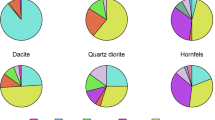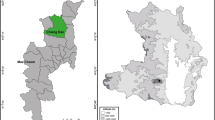Abstract
The pathogenesis of diisocyanate-induced asthma is still largely unknown. Recently, it has been shown that thiol-redox homeostasis of human airway epithelial cells may be altered after in vitro exposure to diisocyanates. In the present study, low molecular weight (LMW) DNA fragmentation patterns in white blood cells (WBCs) were assessed on 16 industrial workers with work-related asthma, before and after chamber challenges with one of three commonly used diisocyanates in concentrations up to 30 ppb. LMW-DNA fragmentation changes were evaluated after 15 h incubation of WBCs embedded in agarose plugs in lysis buffer with or without hydrogen peroxide (H2O2). Increased LMW-DNA fragmentation occurred in WBCs taken at 30 min or 19 h after the end of the chamber challenge in both subjects with positive and in 8 of 14 subjects with negative challenges. In contrast, no change in LMW-DNA fragmentation was seen in WBCs taken at the same time intervals from 11 non-exposed controls. There was no association between changes in DNA fragmentation patterns and possible confounding factors such as age, smoking status, atopy, medication, duration of occupational exposure and period since exposure cessation. These results indicate that diisocyanate exposure can induce DNA fragmentation. Similarities in the increased amounts of WBC LMW-DNA fragments following diisocyanate exposure with the DNA fragmentation after plugs lysis in buffer with H2O2 support the hypothesis that diisocyanates change the intracellular redox steady-state. Whether this effect plays any role in isocyanate-induced asthma has to be investigated in larger epidemiological studies.


Similar content being viewed by others
References
Barnes PJ (1990) Reactive oxygen species and airway inflammation. Free Radic Biol Med 9:235–243
Baur X (1990) New aspects of isocyanate asthma. Lung 168 [Suppl]:606–613
Baur X, Marek W, Ammon J, Czuppon AB, Marczynski B, Raulf-Heimsoth M, Roemmelt H, Fruhmann G (1994) Respiratory and other hazards of isocyanates. Int Arch Occup Environ Health 66:141–152
Bernstein JA (1996) Overview of diisocyanate occupational asthma. Toxicology 111:181–189
Bolognesi C, Baur X, Marczynski B, Norppa H, Sepai O, Sabbioni G (2001) Carcinogenic risk of toluene diisocyanate and 4,4′-methylenediphenyl diisocyanate: epidemiological and experimental evidence. Crit Rev Toxicol 31:737–772
Buttke TM, Sandstrom PA (1994) Oxidative stress as a mediator of apoptosis. Immunol Today 15:7-10
Czuppon AB, Marczynski B, Scheer E, Hartmann R, Baur X (1993) Increased incidence of anti-dsDNA autoantibody concentrations in sera of workers occupationally exposed to diisocyanates. Toxicol Lett 66:29–34
Dawson VL, Dawson TM (1996) Free radicals and neuronal cell death. Cell Death Diff 3:71–78
Day BW, Jin R, Basalyga DM, Kramarik JA, Karol MH (1997) Formation, solvolysis, and transcarbamoylation reactions of bis (S-glutathionyl) adducts of 2,4- and 2,6-diisocyanatotoluene. Chem Res Toxicol 10:424–431
Dharmarajan V, Weill H (1978) Physical state of airborne p,p′-diphenylmethane diisocyanate (MDI) and its measurements. Am Ind Hyg Assoc J 39:737–744
Emelyanov A, Fedoseev G, Abulimity A, Rudinski K, Fedoulov A, Karabanov A, Barnes PJ (2001) Elevated concentrations of exhaled hydrogen peroxide in asthmatic patients. Chest 120:1136–1139
Floyd R (1990) The role of 8-hydroxyguanine in carcinogenesis. Carcinogenesis 11:1447–1450
Gardiner K, Laas W, Patterson D (1986) Fractionation of large mammalian DNA restriction fragments using vertical pulsed-field gradient gel electrophoresis. Somatic Cell Mol Genet 12:185–195
Hayes JD, Strange RC (1995) Potential contribution of the glutathione S-transferase upergene family to resistance to oxidative stress. Free Radical Res Commun 22:193–207
Horvath I, Donnelly LE, Kiss A, Kharitonov SA, Lim S, Fan Chung K, Barnes PJ (1998) Combined use of exhaled hydrogen peroxide and nitric oxide in monitoring asthma. Am J Respir Crit Care Med 158:1042–1046
IARC (International Agency for Research on CAncer) (1986) IARC Monographs on the evaluation of the carcinogenic risk of chemicals to humans. Vol 39. Some chemicals used in plastics and elastomers. IARC Press, Lyon, pp 287–323
Jarvis WD, Turner AJ, Povirk LF, Traylor RS, Grant S (1994) Induction of apoptotic DNA fragmentation and cell death in HL-60 human promyelocytic leukemia cells by pharmacological inhibitors of protein kinase C. Cancer Res 54:1707–1714
Karol MH (1988) The development of an animal model for TDI asthma. Bull Eur Physiopathol Respir 23:571–576
Kelly FJ, Mudway I, Blomberg A, Frew A, Sandstrom T (1999) Altered lung antioxidant status in patients with mild asthma. Lancet 354:482–483
Kennedy AL, Brown WE (1992) Isocyanates and lung disease: experimental approaches to molecular mechanisms. Occup Med 7:301–329
Mapp CE, Saetta M, Maestrelli P, Di Stefano A, Chitano P, Boschetto P, Ciaccia A, Fabbri L M (1994) Mechanisms and pathology of occupational asthma. Eur Respir J 7:544–554
Mapp CE, Fryer AA, De Marzo N, Pozzato V, Padoan M, Boschetto P, Strange RC, Hemmingsen A, Spiteri MA (2002) Glutathione S-transferase GSTP-1 is a susceptibility gene for occupational asthma induced by isocyanates. J Allergy Clin Immunol 109:867–872
Marczynski B, Peel M, Baur X (1997) Changes in high molecular weight DNA fragmentation following human blood exposure to styrene-7,8-oxide. Toxicology 120:111–117
Marczynski B, Kraus T, Rozynek P, Schlösser S, Raithel HJ, Baur X (2001) Changes in low molecular weight DNA fragmentation in white blood cells of workers highly exposed to asbestos. Int Arch Occup Environ Health 74:315–324
Sakamoto T, Repasky WT, Uchida K, Hirata A, Hirata F (1996) Modulation of cell death pathways to apoptosis and necrosis of H2O2-treated rat thymocytes by lipocortin I. Biochem Biophys Res Commun 220:643–647
Seatta M, Di Stefano A, Maestrelli P, De Marzo N, Milani GF, Pivirotto F, Mapp CE, Fabbri LM (1992) Airway mucosal inflammation in occupational asthma induced by toluene diisocyanate. Am Rev Respir Dis 145:160–168
Slatter JG, Rashed MS, Pearson PG, Han D-H, Bailley TA (1991) Biotransformation of methyl isocyanate in the rat. Evidence for glutathione conjugation as a major pathway of metabolism and implications for isocyanate-mediated toxicities. Chem Res Toxicol 4:157–161
Vock EH, Hoymann HG, Heinrich U, Lutz WK (1996) 32P-postlabeling of a DNA adducts derived from 4,4′-methylenedianiline, in the olfactory epithelium of rats exposed by inhalation to 4,4′-methylenediphenyl diisocyanate. Carcinogenesis 17:1069–1073
Vock EH, Vamvakas S, Gahlman R, Lutz WK (1998) Investigation of the induction of DNA double-strand breaks by methylenediphenyl-4,4′-diisocyanate in cultured human lung epithelial cells. Toxicol Sci 46:83–89
Weiss ST (1996) Issues in phenotype assessment. In: Liggett SB, Meyers DA (eds) The genetics of asthma. Marcel Dekker, New York, pp 401–419
Wiseman H, Halliwell B (1996) Damage to DNA by reactive oxygen and nitrogen species: role in inflammatory disease and progression to cancer. Biochem J 313:17–29
Wisnewski AV, Liu Q, Miller J-J, Magoski N, Redlich CA (2002) Effects of hexamethylene diisocyanate exposure on human airway epithelial cells: in vitro cellular and molecular studies. Environ Health Perspect 110:901–906
Acknowledgements
We thank Beate Chilian, Anja Bracht and Bernd Naurath for expert technical support.
Author information
Authors and Affiliations
Corresponding author
Rights and permissions
About this article
Cite this article
Marczynski, B., Merget, R., Teschner, B. et al. Changes in low molecular weight DNA fragmentation in white blood cells after diisocyanate exposure of workers. Arch Toxicol 77, 470–476 (2003). https://doi.org/10.1007/s00204-003-0462-y
Received:
Accepted:
Published:
Issue Date:
DOI: https://doi.org/10.1007/s00204-003-0462-y




